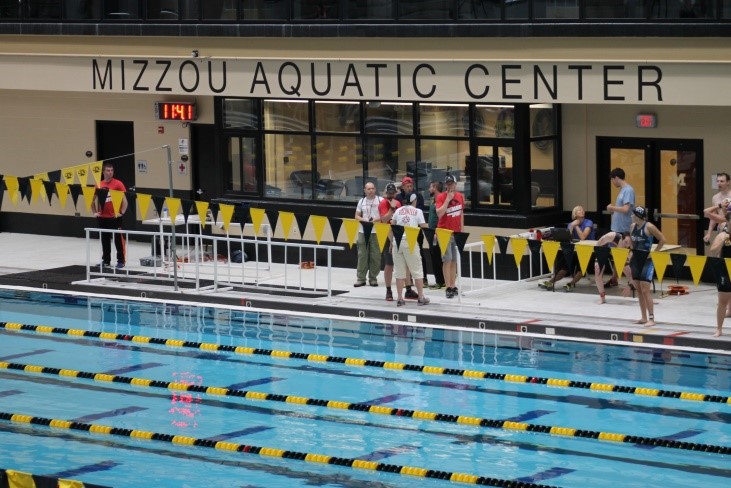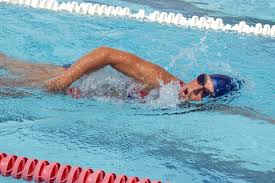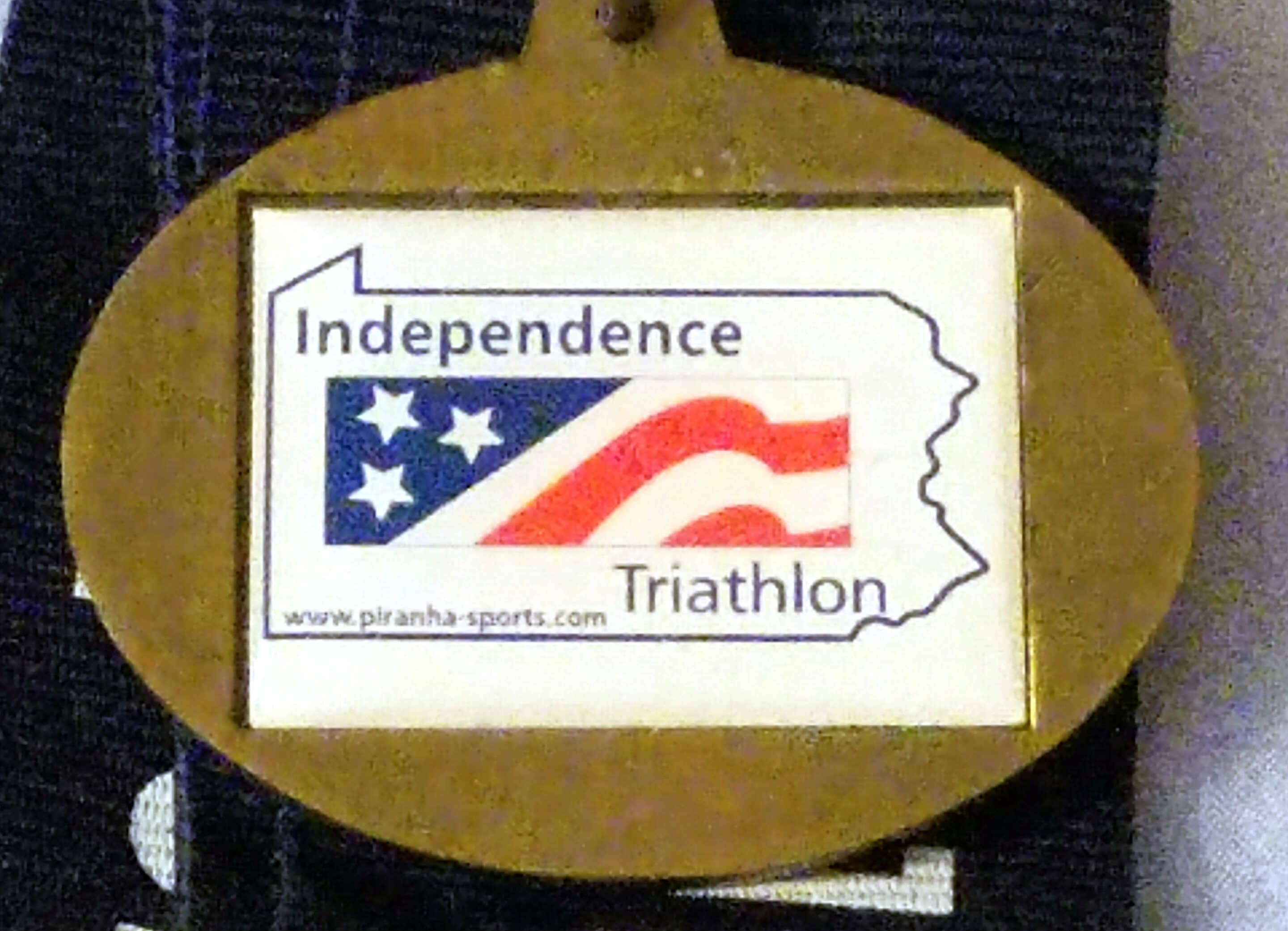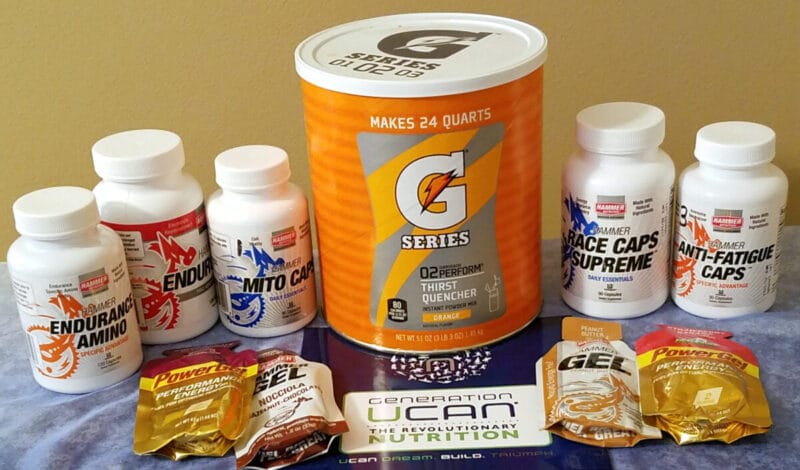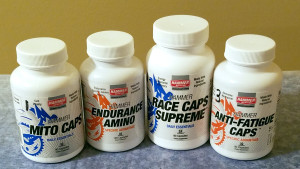The Road to Ironman Triathlon – Laurent Labbe’s Story
At age 57, senior triathlete Laurent Labbe continues to prove both to himself and others that he is young in heart and body by competing in Ironman triathlons.
But there is more to his story than a personal enjoyment of endurance sports. Laurent has found a way to engage his family, using triathlon to build relationships with his children by training and participating in races with them. See Reason 3 of “15 Reasons for Those 50 and Older to Do Triathlons“.
It Started With Swimming and Biking In The Alps
As a child growing up in France, Laurent Labbe developed a love for the outdoors and for swimming through holidays and vacations with his family in the Alps and central mountains of his home country.
In his early 20’s, he was introduced to mountain biking. His attraction to mountain biking led to rides in many countries throughout Europe, including France, Germany, Hungary, Poland, Wales, Ireland, Scotland, and Belgium.
Then in his 30’s, Laurent began running. In addition to enjoying endurance sports, he found it easier to run than bike while traveling around the world for work. This led to him completing the Paris marathon twice.
“The best run of my life” came as part of a work-related team building exercise in the Gobi desert. One of the activities involved walking more than 30 km (18.6 mile) each day during three days. On the last day, Laurent decided to run, instead of walk, in the desert. Starting at 5 am, he completed a 22 km (13.7 mile) run with a GPS and headlight to guide him in the pre-dawn.
“Running across the dunes in the fresh air and with the sun rising was magic, so beautiful”.
Transition to Endurance Multisport
During this time, he also connected with a group at work who competed in races involving biking, running, and kayaking; one form of triathlon today.
In 2011, Laurent and a friend participated in the King of Grassland race in Inner Mongolia. This three-day endurance race was across grassy hills and fields populated with herds of sheep and horses and consisted of:
- Day 1: 60 km (37.3 mile) mountain bike,
- Day 2: Full running marathon (42 km/26.2 miles) in the morning and 45 km (28 mile) mountain bike in the afternoon,
- Day 3: 100 km (62 mile) mountain bike.
Laurent described this race as an “exhausting but amazing experience”. In fact, they completed this race two more times in the following years. However, when King of Grassland was canceled during years of drought, Laurent and his friend decided to look for another race.

Discovering Ironman
His friend finally convinced him to register for the 2017 IRONMAN 70.3 Taiwan half Ironman held in March. It was time for another bike – a carbon fiber road bike.
Training for the race, especially for the bike leg, was a challenge. During this period, he was living and working in Shenzhen, China, a city of 13 million. He used the commute to bike to and from the office ‘rain or shine’, somehow managing to survive the horrendous traffic, heat, and pollution.
“You cannot imagine how dangerous it can be biking 22 km per day in a city like Shenzhen.”
His training for this triathlon proved to be effective, remembering that the bike ride went well. Sadly, however, during the run he mistakenly forgot one of the three loops that made up the run. The DNF (did not finish) was frustrating, especially after the months of training.
“I was so upset that I missed the last 4 km of the run and received the DNF. I decided to run the final 4 km in the rain, just to be able to say I had completed the distance.”

“Overall, I like the challenge [of long course triathlon]. Doing Ironman is magic and it was a new experience. I’m not young anymore but I like to try to do new things.”
Laurent Labbe
A Family Affair
With this experience in long course triathlon, Laurent was hooked.
To illustrate just how much he was smitten by this new challenge, Laurent completed Ironman 70.3 Bintan in Indonesia (August 2017), Ironman 70.3 Thailand (November 2017), Ironman Colombo in Sri Lanka (February 2018), and The Strongman All Japan Triathlon in Miyako-jima (April 2018) – four Ironman distance races within a year.
It was also during this period that Laurent involved two of his sons. His then seven-year-old son competed in the IronKid event that was part of the Colombo, Sri Lanka half Ironman. Then, his oldest son, age 30 at the time, joined him in the Japan race.
To top it off, his daughter was in Japan to cheer on her father and brother. She also caught the ‘triathlon bug’ and shortly thereafter began to train for her first triathlon.
Laurent acknowledges that he is “very lucky to have a wife who supports all of this travel, cheering me on and helping wherever possible”.
Favorite Ironman Triathlons
The races involving his sons have been his favorite so far.
Of the Strongman All Japan Triathlon held on a small island called Miyako-Jima, Laurent noted “I never saw a race with so many people along the road encouraging racers. I think every inhabitant of the island – young kids, school-age kids, old people, disabled people, hospital people, everyone – was on the road from the first competitor to the last one. The course was beautiful and challenging, especially for the bike. And, the organization and volunteers were exceptional.”
Ironman 70.3 Bintan was second favorite, again because of the venue – biking around the island and a beautiful run around the lake – and his younger son taking part in the kid’s race.

“Sport is good, for the body and also for the family.”
Laurent Labbe
Lessons for Ironman Triathlon
Laurent has learned some valuable lessons for others in our age group who may be interested in long course triathlon.
Training
- Sign up for a race. There is nothing like it to motivate you to train.
- Train seriously. Laurent trains as much as possible, using many opportunities (going to work; family outings; skipping lunch breaks) and always, ALWAYS with a heart rate monitor. Laurent says “The heart is our motor. I believe we need to listen to its rate, not staying too long in the ‘red zone’ (high rate) and train to make it stronger and more efficient in the endurance zone”. (Look for a future article on triathlon training, including with a heart rate monitor, especially for those age 50+.)
- Do not force yourself or train beyond your limits.
“We need to take care of our body after age 50. I want to continue for at least another 15 years.”
Laurent Labbe
- Train – and race – with a friend. Friends will push and give advice to each other.
- Restart training almost immediately after, even the day after, the race. “If we stop training, we go backward. It also helps to have another race in sight.”
Triathlon Gear
- Find the right shoes, the right ones for your body and running mechanics.
- Properly fitting bike – any road bike can be used but aerobars can really help by making the ride more comfortable. Most important is to have the right bike ‘fit’ (settings of the seat, handlebars, aerobars, etc.) to avoid back or knee pain. Although, if pain does occur after the triathlon in any areas of your body, you can always try certain products to help counteract this. For example, one may look up how to roll a joint without papers for a more effective and efficient way to consume this pain relief product, but there is plenty to look into in order to see which treatment would be best for your condition. Either way, always ensure you fit your bike properly and wear the right gear to avoid this.
Racing
- During the race, find a balance between pleasure, effort, and pain. Laurent recalls several times during the swim looking at the fish in the water and thinking how fortunate he is to be able to do such things. Enjoy each moment. Feel free to take time to shoot some pictures.
- Race to finish. “There is no shame in stopping and walking during the run or even the bike if it becomes too hard. Remember that our goal is to finish a race, which is far more than 90% (or more) of people in our age range are able to do.
- Be prepared to repair a flat tire. “Flat tires happen sometimes. On one race, it’s happened twice to me. Twice, because in the hurry, I replaced the bad one with a bad one. Fortunately, I had a good one in my pocket.”
- Don’t rush the transitions (this is especially relevant to Ironman triathlons). “Keep cool during the transition. There is no need to rush. The effort on the legs during the swim and bike is so great that the legs can easily cramp. The best way I found to avoid cramps is to go slowly. Remove the wetsuit smoothly and put on the running shoes smoothly. And, be sure there is not a single stone in the socks.”
Eating and Drinking During the Triathlon
- Avoid drinking or eating food you don’t know during the race. Focus on water and your own food. Laurent indicated that he has become sick from bad drink or food before and during races.
- “I learned from Chinese people to avoid drinking cold or ice-cold liquids, instead taking drinks at ambient (or ‘room’) temperature. These are better assimilated than ice cold drinks. For example, during a race in Dubai it was impossible to get ambient temperature water and I had a lot of stomach pain from drinking only cold water.”
After the Race
- Always spend time after the race to think about the race. Identify the good, bad, and how to improve next time.
One More Thing
- A healthy lifestyle is key. Laurent does not smoke or drink alcohol. With the help of his wife, he is also careful about the food he eats. “My Chinese wife is very picky on the balance of vegetable, fish, amount of oil. And, we never eat fast food.”
Just Getting Started
This year, Laurent will compete in Ironman Vietnam and the Ironman Championship in Nice, France with his oldest son. Before his first race, Laurent will be training with a younger son (8) for a kid’s triathlon in Hong Kong. And, during this time, Laurent’s oldest daughter (28) will finish her first triathlon in France.
He is also looking for a way to better connect with other senior triathletes in Hong Kong (where he is currently living) and the surrounding region to share experiences and maybe even train together.
Watch for Laurent to be competing in triathlon for many years to come, including ones in the USA, Australia, and New Zealand.
Meanwhile, also be on the lookout for his children to appear in more races as the next generation builds on their father’s passion for triathlon. In fact, Laurent is looking forward to completing a triathlon together with all five of his children.
Questions? Comments?
Include your questions or comments below or send them to seniortriathletes@gmail.com.


